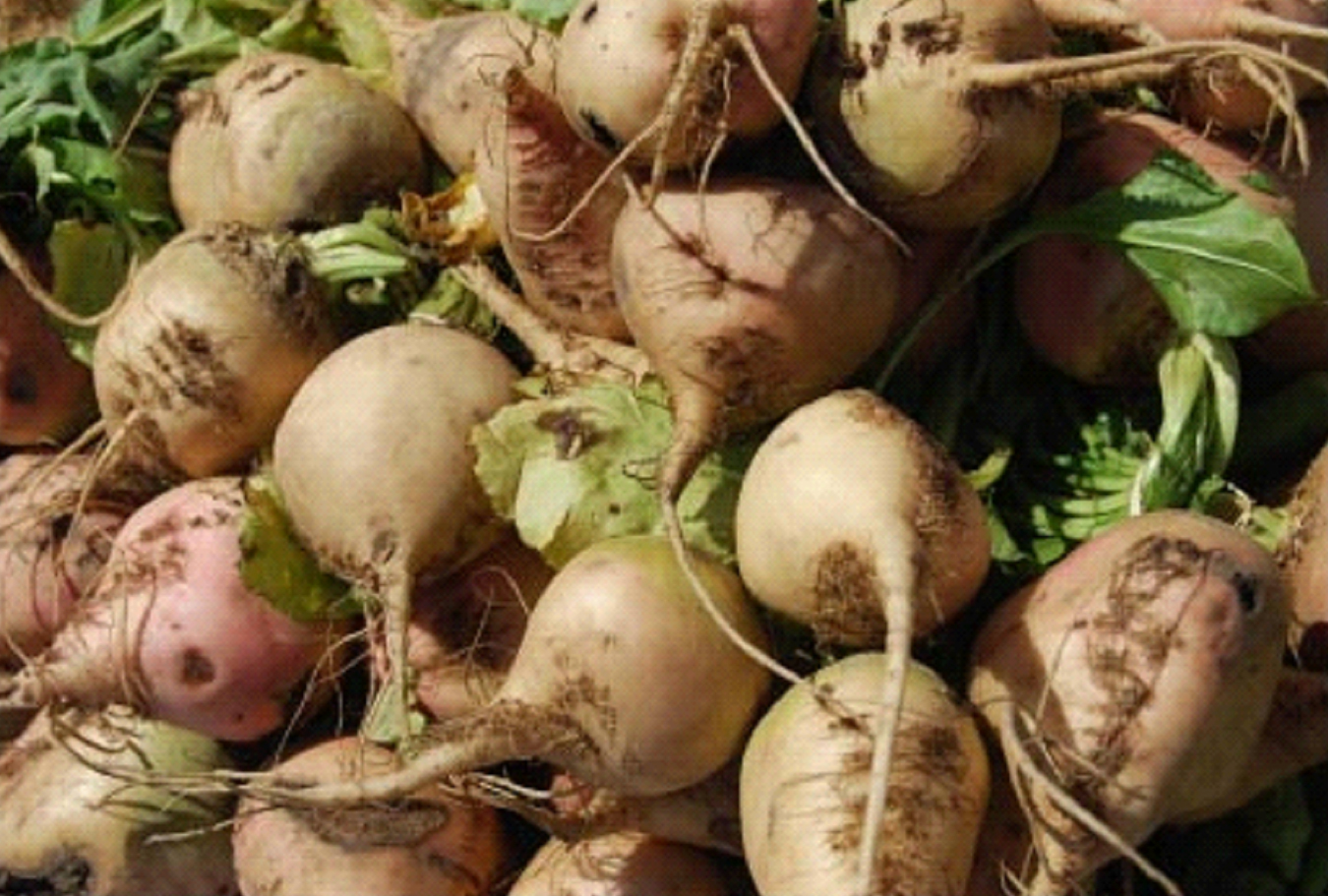
Rutabagas (Brassica napobrassica) are a cool-season root crop that can be produced in the spring or fall. Similar to turnips, rutabagas are often called “table turnips” in northern areas and Canada. Rutabaga leaves are bluish-green, thick and smooth. They are edible. The roots are often more elongated than turnip roots and have a thick, leafy neck. Rutabagas grow best in temperatures from 50 to 65° F.
Planting Dates
| Spring | Fall | |
| North Georgia | March 15 to June 1 | August 1 to September 15 |
| South Georgia | February 1 to March 31 | August 1 to October 1 |
Rutabagas should be seeded 2 1/2 to three months before a heavy frost. Spring planting can be done as soon as the soil is dry enough to work.
Soils and Fertilization
A moderately deep, highly fertile, well-drained soil with pH 6.2 to 6.8 is best for growing rutabagas. A soil test should be taken and lime added as needed. Fertilizer applications should be based on soil test recommendations. A general recommendation for rutabagas is 2 to 5 pounds of 10-10-10 fertilizer per 100 square feet. Use lower rates on heavier soils and heavier rates on lighter (sandier) soils. Apply half at planting and half about four weeks later.
Planting and Spacing
Rutabagas can be planted in rows 14 to 18 inches apart. Work soil well to form a good seedbed and incorporate fertilizer thoroughly. Plant seeds 1/2 inch deep with about 4 inches between plants. Initial seeding can be closer and then the plants thinned to a 4-inch spacing.
Irrigation
Rutabagas require an abundant supply of moisture to ensure best yields and high quality. Most soils will require 1 1/2 inches of water every seven to 10 days. Moisture is most important as the root nears maturity.
Harvesting and Storage
Rutabagas are harvested when roots are 4 or 5 inches in diameter. Top the roots (remove leaves from the fleshy root), wash off any soil and dry quickly. The leaves may be cooked and eaten. Commercially, rutabagas are generally waxed for keeping and can be stored for several months at temperatures of 32 to 35° F and relative humidities of 90 to 95 percent.
Pest Management
| Weeds | If cultivation is used to control weeds that emerge, it should be shallow (less than 2 inches deep). Attack weeds when they are young and easier to hoe or till.* |
| Insects | Turnip aphids, flea beetles, root maggots and wireworms are serious pests. Root maggots and wireworms attack the roots and control requires preplant applications of proper insecticides to the soil. Aphids and flea beetles damage the tops and a spray program may be needed to control them.* |
| Diseases | Clubroot, root knot, leaf spot, white rust, white spot, anthracnose and alternaria are disease problems that can affect rutabagas.* |
| *Consult your local county Extension agent for spray recommendations. | |
Varieties
American Purple Top — 90 days; deep purple crown; yellow below crown; globe-shaped root; 5 to 6 inches in diameter with yellow flesh; medium, blue-green, cut leaves.
Laurentian — 90 days; purple crown; light yellow below crown; globe-shaped roots 5 to 5 1/2 inches in diameter with yellow flesh; medium, blue-green, cut leaves.
Status and Revision History
Published on Jan 12, 2009
Published with Full Review on Jan 12, 2012
Published with Full Review on Jan 23, 2015
Published with Full Review on Aug 18, 2022


























































